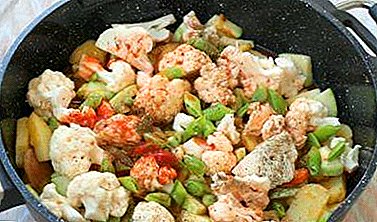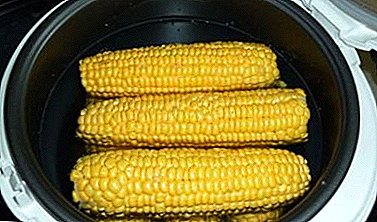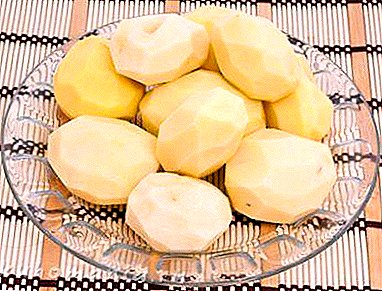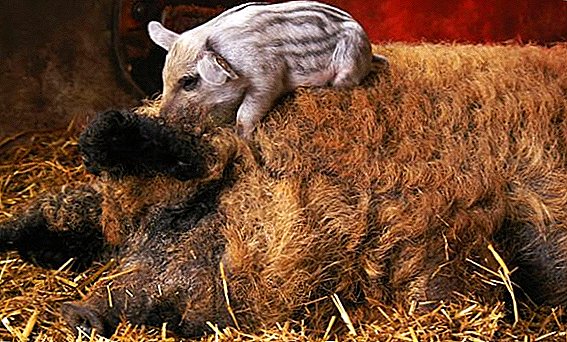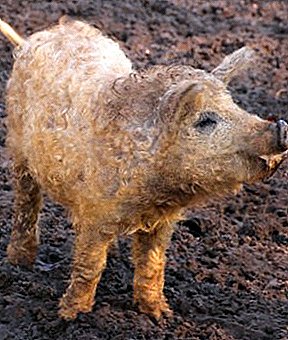 To see a pig on Ukrainian farms with a luxurious curly hair like a sheep’s - rare opportunity. We know little about the rare breed of pigs that have long conquered the whole of Europe. What attracted Hungarian mangalica farmers of progressive countries, what are its features and disadvantages, how to raise such a pig - we will tell about all this later in the article; you will also find photos of pedigree pigs and recommendations of their care professionals.
To see a pig on Ukrainian farms with a luxurious curly hair like a sheep’s - rare opportunity. We know little about the rare breed of pigs that have long conquered the whole of Europe. What attracted Hungarian mangalica farmers of progressive countries, what are its features and disadvantages, how to raise such a pig - we will tell about all this later in the article; you will also find photos of pedigree pigs and recommendations of their care professionals.
Breeding history
This amazing breed can be safely considered one of the most unusual. Long hair coils, resembling astrakhan, can not leave indifferent lovers pig pig "beauty." From a distance they are easily confused with a sheep herd, probably, therefore, the pigs had the parallel name “sheep pigs”. 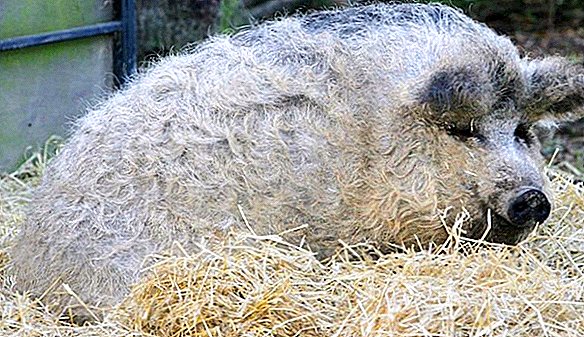
Did you know? All pigs, regardless of breed, have an excellent sense of smell. Europeans often use this gift to search for delicious truffles hiding under the ground. Such mushrooms in the markets of Paris cost from 600 euros. Before pigs served in the police for sniffing drugs.
It all began with the distant 1833, when, on the orders of the Hungarian Archduke Joseph, attempts were made crossbreeding domestic and wild pigs. The experiment was a success. The resulting brood of half-savages could easily hibernate in the bitter cold, was highly immune and took care of his own food.
New breed interested in the monasteries. Over time, this interest has grown into a mass breeding. Often in the forest glades and meadows of Hungary one could see whole herds of monastic wards.
By the end of the century, the demand for shaggy mangalicans crossed the borders of the country. The owners of large lands had more profits from pigs than from logging and growing cereals. 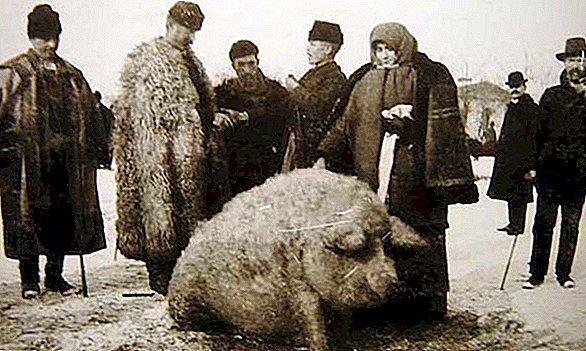 Around 1900, this breed learned residents of Ukrainian Transcarpathiawhere the animals were brought by indigenous Hungarians. They bred whole herds of curly, grazing them in the forests and valleys. A little later, the Hungarian mangalica came to Britain. But since local farmers switched from grease to meat, its breeding was not successful.
Around 1900, this breed learned residents of Ukrainian Transcarpathiawhere the animals were brought by indigenous Hungarians. They bred whole herds of curly, grazing them in the forests and valleys. A little later, the Hungarian mangalica came to Britain. But since local farmers switched from grease to meat, its breeding was not successful.
Did you know? In the homeland of the Hungarian mangalitsa, its livestock grew annually exponentially. If in 1920 it numbered only 2 thousand individuals, then by 1943 this figure had increased to 30 thousand.
Very soon the meat pigs drove the mangalicans out of the agricultural market. The number of pigs on farms rapidly fell and in general barely reached 7 hundred. If farmers had not realized it in time, the breed would have gone into oblivion.  Rescue livestock began on the initiative of the Hungarian pig breeders in 1994. Then the National Association of pigs was created. Over time, the idea was picked up by the British company "Big Paradise" and farmers from the United States of America. Today, woolly purebred pigs around the globe, there are about 7 thousand individuals.
Rescue livestock began on the initiative of the Hungarian pig breeders in 1994. Then the National Association of pigs was created. Over time, the idea was picked up by the British company "Big Paradise" and farmers from the United States of America. Today, woolly purebred pigs around the globe, there are about 7 thousand individuals.
Breed description
It is impossible to confuse Hungarian mangalitsa with another breed of pigs. These unique artiodactyls have many striking differences.
The first thing that strikes you - this long curly woolthat thickly covers the whole body and even the ears. But, if you keep the animals in a warm room and feed well, the sheep's hair falls out. It is a natural defense against colds and insects. Thanks to such a fur coat, animals can be kept outside all year round.
Important! Pedigree pigs give 5-6 cubs. Farrow over 9 ask evidence of parents' impure blood.
The second important feature in the description of the Hungarian mangalica breed is pronounced dark spot on the bottom edge of the ears. The label among farmers is called the "Wellman spot." It can vary in size from 3 to 5 cm and is a sure sign of pedigree. This is also indicated by the black skin around the eyes, stigma, hooves, nipples and on the inside of the tail. 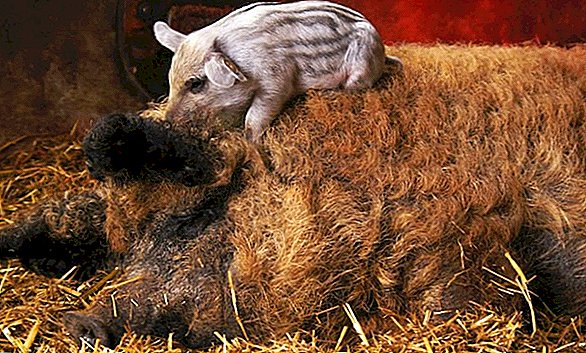 Representatives of the Hungarian selection have powerful, but light bones, have a body and head of medium size. Their ears are directed forward, and the profile is slightly curved.
Representatives of the Hungarian selection have powerful, but light bones, have a body and head of medium size. Their ears are directed forward, and the profile is slightly curved.
The breed is ranked as greasy group. Adult boars weigh up to 300 kg, with more than half they gain in the first 12 months of fattening. By this time the females mature. Their annual weight is 160 kg with an increase of about 75 cm.
Hungarian piglets are distinguished from wild ancestors by their calm balanced temperament. They inherited endurance and the ability to memorize the way home. Sows have a good natural instinct and protect their offspring, warm it in winter.
Important! Salo Hungarian mangalitsa favorably with other breeds. First, it contains less cholesterol, and much more nutrients and beneficial trace elements are found in the composition. Secondly, the product is absorbed faster in the body. The same can be said about meat. Its main value in a uniform layer of intermuscular fat that melts in the process of cooking, giving the dish a special taste. From such meat the dried bacon most tasty and known around the world turns out.
Species of breed by type of coloring
Earlier, during the mass "procession" of the breed on European farms, shaggy pigs differed in different colors, which could satisfy every taste. Among them were white, gray, black, gray-brown, red, smoky with light blueness and many others. But today, of all this diversity, there are only 4 subspecies:
- White. It is the most popular color of modern Hungarian mangalitz. About 80 percent of the total number of such individuals.
- The black. Unfortunately, today individuals with such hair are very rare. Some experts say that the coloring is already lost.
- Red (sometimes called red). Also on the verge of extinction.
- "Swallow" (or mixed color). Pigs of this subspecies are characterized by black back, snout and back of the ears, white belly and legs.
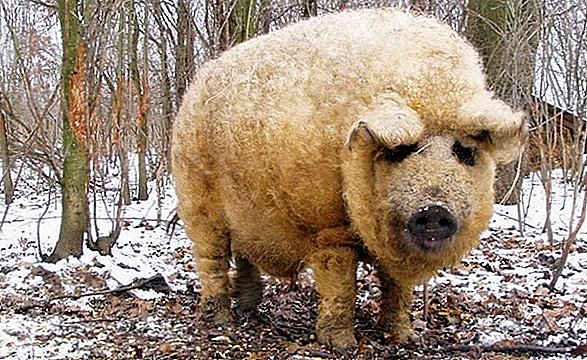
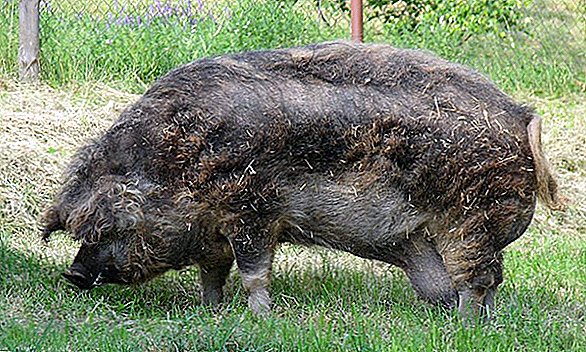

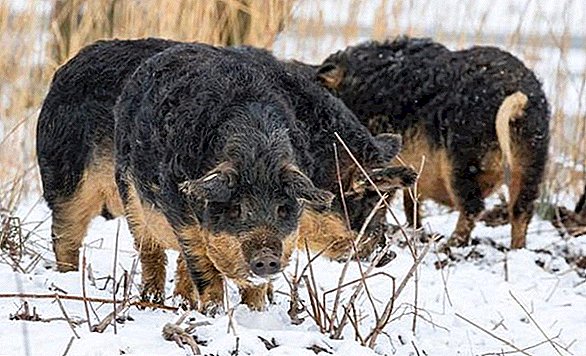
Advantages and disadvantages
Judging by the reviews of livestock breeders, the breed of pigs of the Hungarian mangalica is characterized by both positive and negative characteristics. We will understand in more detail these nuances.
Did you know? Scientists believe that pigs are easily trainable, they understand human speech perfectly well and can even sympathize. An example of the experiment is the little pig Maurice, who has the international title of the smartest pig. 52 seconds are enough for him to put puzzles together.
pros
The main advantages of the breed are:
- economic benefits from keeping animals (they feed on pasture and do not require special conditions for breeding);
- herd social behavior;
- the quality of lard and meat, which is considered a delicacy by international criteria;
- genetic immunity of piglets;
- young endurance;
- high profitability.
Minuses
It would seem that everyone dreams of such pigs: they seem to be there, but there is no hassle with them - only profit. However, along with the positive moments of breeding this species, negative:
- the difficulty to find purebred parents for breeding offspring;
- the content of these half-savages requires a large pasture with high-quality feed;
- due to the fact that demand exceeds supply, the price of pedigree pigs is not available to the average consumer;
- low productivity of females (this feature is typical for all pedigree pigs).
Read also about other breeds of pigs: Duroc, Mirgorod, red-belt, large white, Vietnamese vislobryusha.
How to choose pigs when buying
If you decide to acquire young Hungarian mangalica, go for a purchase not on the market or on the Internet, but on farms with a good reputation. After all, one should not expect from mongrel piglets above the mentioned endurance and adaptation to any conditions of detention. Be prepared that the search for the right product can take a lot of time, because the breed is truly considered exotic. 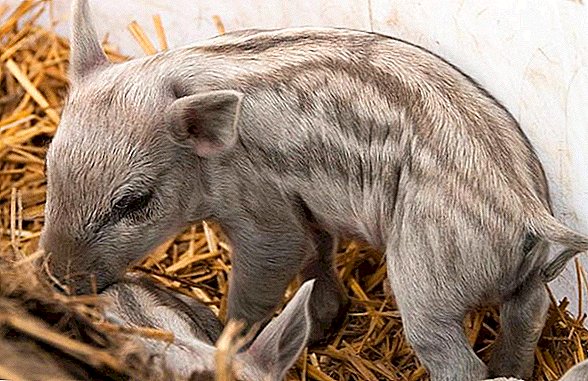 To avoid becoming a victim of unscrupulous sellers, remember main breed signs:
To avoid becoming a victim of unscrupulous sellers, remember main breed signs:
- "Wellman's stain" on the ear;
- black skin around the eyes, nipples, on the stigma, hoofs and the inside of the tail;
- thick coat of white, red, black color or "swallow";
- striped back, which is a genetic legacy from wild ancestors.
Important! When buying, pay attention to how the pig eats. If he actively absorbs any food offered to him - such an animal can be taken. If it sucks food, you need to look for another.
Half-breeds can be seen immediately by an unfriendly character. They also gain weight poorly, picky at food and have hard meat.
Buy piglets need a couple. In the company they have fun, they eat better and, accordingly, grow faster. Carefully inspect the animals you like. They, in addition to a good appetite, must have a healthy appearance. Choose a young with a broad sternum and a straight back, shining hooves, even and strong legs, a curved "bagel" tail, clean eyes and ears. 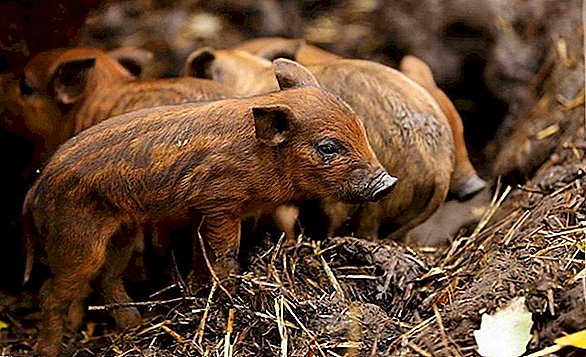 Healthy individuals are always playful and active. When you take them in your arms, they start to scream loudly. The muffled and sluggish sound, or the lack of it, is indicative of poor health and weakness of the humane.
Healthy individuals are always playful and active. When you take them in your arms, they start to scream loudly. The muffled and sluggish sound, or the lack of it, is indicative of poor health and weakness of the humane.
Important! Refuse to buy overly plump pigs. Excessive roundness of their forms indicates an advance preparation for the sale, which was carried out by regular watering of animals with sweet milk. Such individuals are very spoiled, prefer sweets and, as soon as you transfer them to pasture, will lose much weight.
Conditions for content
It is said that Hungarian mangalicans don't care at all what conditions they will grow. Food and lodging will find themselves. And everything else - little things. But caring owners keep the herd in special pens with access to pasture.
To get a herd of woolly pigs, you need to take care of a large and high-quality grazing. It is desirable to protect from wild animals and dogs. This can be any field grass or a specially sown field.
Inside, be sure to arrange low summer canopies, where animals can hide from the scorching sun and bad weather.
It is also important to build warm pigsty for the winter. Despite the endurance and fitness of barbecues, wintering in a haystack will be more comfortable for them in a good room. After all, bad conditions will necessarily affect the productivity of the herd. In the pen should be constant access to fresh water. 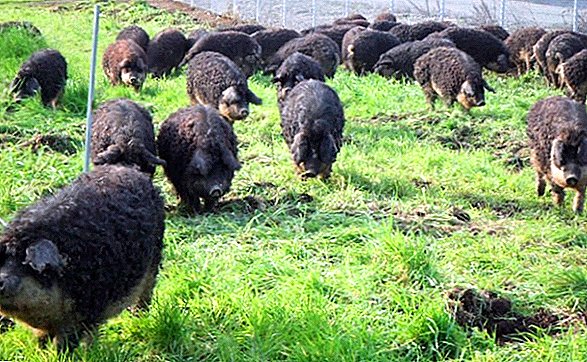
What care is needed
The breeders say that the Hungarian magnalitz is created for the lazy, because these hoofed animals, unlike the traditional varieties of pigs, do not require any care. They are important that there is a lot of grass, vegetables, fruits, acorns and water.
Did you know? The famous Big Bill from Texas entered the world history of pig breeding. The four-year-old boar was a half-breed of Polish and Chinese breeds. With a growth of 1.52 cm, his weight was 1,153 kg, and the length was 2.74 cm. After the death of Bill, no farmer was able to grow such a giant.
Experts in the field of animal husbandry for home cultivation advise not to test animals for strength and provide them with the same care as other pets. Caring for curly pigs is reduced to their daily grazing, cleaning pens and changing bedding. Do not forget that the pigs are quite independent and do not need constant supervision. Make sure that they have access to grass and water, but do not overfeed them.
Care for shaggy facilitates their genetic resistance to common pig diseases. These piglets do not need to be vaccinated and given antibiotics. They do not get sick. Veterinarians only remind of the need for every six months to disinfect young and adult individuals from lice and worms.
Find out what to do if your mumps has symptoms of the disease: African plague, parakeratosis, pasteurellosis.
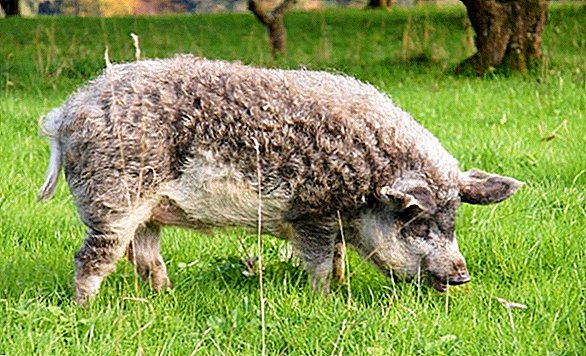 Small pigs after birth, it is desirable to break off the canines, so that they do not bite the sow during feeding. The timely castration of hogs is also important.
Small pigs after birth, it is desirable to break off the canines, so that they do not bite the sow during feeding. The timely castration of hogs is also important.
Important! Every day mangalica is gaining weight per pound.
How to feed
This breed is so specific that questions about how and how to feed the Hungarian mangalica are solved by themselves. Woolen Pigs omnivores. They will not abandon feed of plant and animal origin, their processed products, food waste.
In winter, artiodactyls eat root crops, acorns, chestnuts, hay, sliced corn stalks, bones, wheat brago, bran and offal. Do not indulge curly babies with select delicacies, otherwise they will no longer eat properly and will require delicacies.
In the summer season, pigs are given grass (meadow, garden weeds, medicinal and any other), fruit tallets, duckweed, shoots, bark and roots of various trees (especially oak is loved), potatoes, corncobs, carrots, beets, squash. 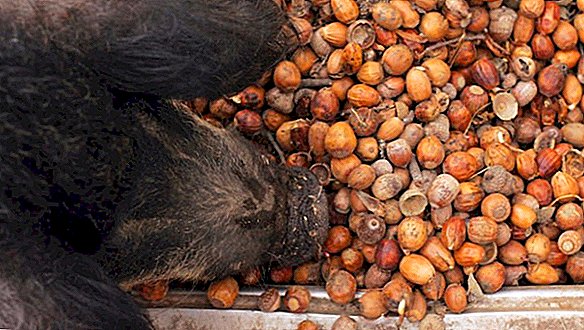
Rearing
Sows after farrowing are not allowed for walking and are kept with piglets in closed pen. It is important that up to the age of one and a half months young offspring together with mother's milk receive all the necessary vitamins and trace elements. Therefore, special attention is paid to the nutrition of the uterus.
Did you know? The most ancient pig breed in the world is the Chinese Meishan variety. Its history began about 400 years ago. Breedy individuals are distinguished by their large size, solid black color, very long ears, and a shortened head.
Some owners cost the purchase of feed. Others share their own cooking experience. For this you need: hay or succulent feed (70%), head (15%), corn (20%), wheat and bran (10% each), chalk or meat and bone meal (1%), barley (40%) and premix for piglets (1%).
Feed young stock can be a week after birth. The best option for them is roasted barley or liquid chatter. To strengthen the bones, it is desirable to offer bone meal, chalk or red clay to the piglets. In no case should not be allowed to feed the maternal feed into the feeding bowl of the babies. It is fraught with diarrhea, general malaise, stunting and even death.  Monthly piglets feed starter feed with the addition of root crops, hay or dried herbs. At this age, they can already be weaned from sows for sale.
Monthly piglets feed starter feed with the addition of root crops, hay or dried herbs. At this age, they can already be weaned from sows for sale.
If you plan to leave livestock for yourself, during this period, you can teach kids to run. Up to the age of four months, piglets are given feeds from mackerel (3%), chalk (5%), premix (1%), bran (10%), wheat (29%), barley (29%) and corn (30%).
Important! Piglets that graze with the herd, feed feed twice a day. Overfeeding for them is fraught with death.
Older individuals are not limited in the selection of food. The main thing is that in the daily ration of mangalits there should be about 70% of greenery or root crops, 20% of chestnuts and acorns, 10% of mixed feed.
As you can see, the cultivation of the Hungarian mangalitsa does not require costs, due to which it is a very profitable business. Today, the demand for individuals of this breed is growing again.



